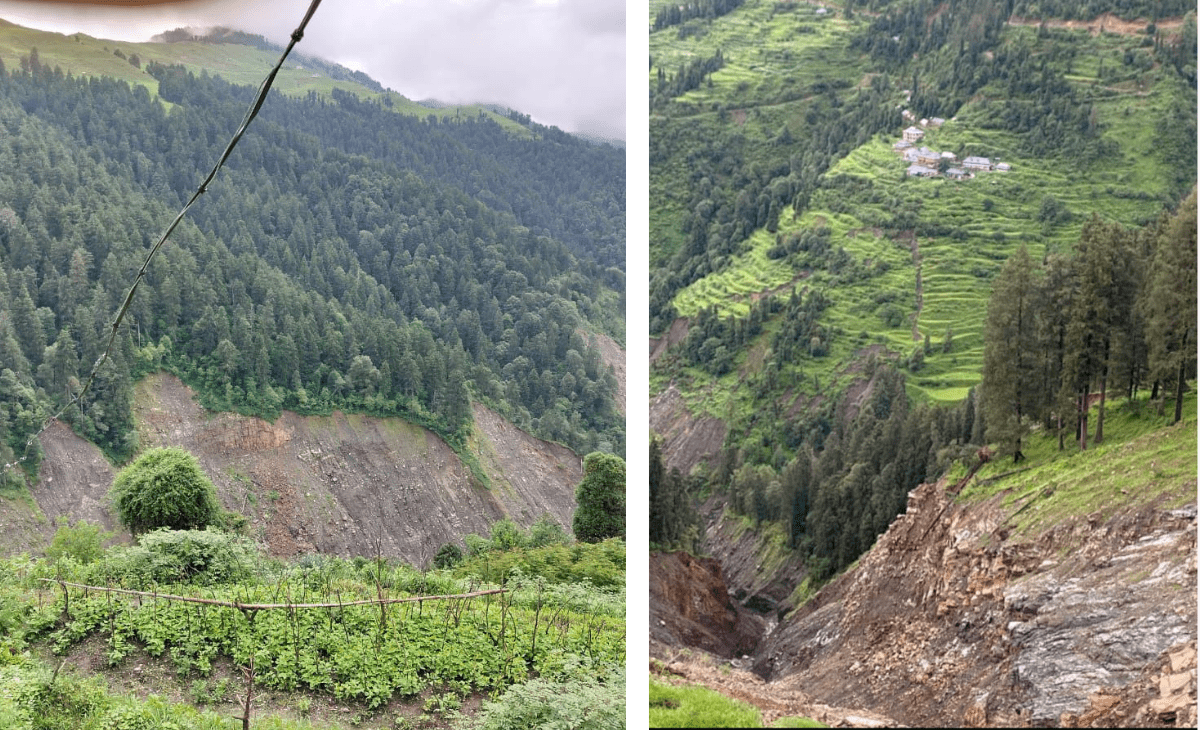MANDI: Nestled in the border of Jogindernagar and Padhar subdivisions, the small Kadhar village that’s home only to 14 families has emerged as a model for natural farming in Himachal Pradesh’s Mandi.
Every household in the village has embraced natural farming methods, setting a remarkable example of agricultural transformation.
Until a few years ago, chemical farming was prevalent in the village. The change began when the women of Kadhar took the initiative to learn the nuances of natural farming techniques.
Inspired by their success, the entire village gradually transitioned to chemical-free agriculture.
“We underwent training in natural farming four years ago. In the first year, we tried it as an experiment and saw encouraging results,” said Rajni Devi, a resident of Kadhar.
“Motivated by the success, we expanded the use of natural methods across all our farms. Today, it is a matter of pride that Kadhar has been recognised as a model village for natural farming.”

Traditional crops grown across 8 hectares
At present, the farmers of Kadhar cultivate over eight hectares of land with traditional crops such as wheat, barley, maize, peas, potatoes, soybeans, kidney beans and finger millet (ragi) using natural farming practices.
The villagers highlight that this method is significantly cost-effective, relying mainly on cow dung and cow urine, materials readily available since every household owns indigenous cows.
Adding to their joy, the recent hike in the minimum support price (MSP) for maize and wheat by the state government has brought smiles to the farmers’ faces.
Rajni Devi thanked the government, noting that with maize priced at Rs 40 per kg and wheat at Rs 60 per kg, natural farming is now not only sustainable but also more profitable.
Over 3,300 farmers linked to natural farming in Drang block
Lalit Kumar, Block Technical Manager of the ATMA project at Drang, said Kadhar village had officially been declared a model village for natural farming.
He said that nearly 3,376 farmers across the Drang development block had now adopted natural farming practices.
To promote this sustainable model, the government is providing substantial support. The incentives include subsidies for purchasing indigenous cows, constructing cow sheds, buying plastic drums and providing seeds for crops like wheat, peas, soybeans, black gram, finger millet and foxtail millet.
Subsidies worth Rs 22 lakh distributed to farmers
According to officials, a 75 per cent subsidy is being provided on the purchase of plastic drums, with approximately 1,500 farmers already having received financial aid totalling around Rs 13.35 lakh.
In addition, Rs 8,000 is being offered to farmers for building cow shed floors, benefitting 54 farmers with a total subsidy of around Rs 4.32 lakh.
Farmers also receive grants ranging from Rs 10,000 to Rs 50,000 for creating resource storage units, and a 50% subsidy is available for purchasing indigenous cows. So far, 17 farmers have availed themselves of this benefit, receiving nearly Rs 4.25 lakh in financial support.
20 resource centres established to support farmers
To further ease the adoption of natural farming, 20 resource centres have been established in the region.
These centres supply farmers with essential natural inputs: cow dung at Rs 5 per kg, Jeevamrit at Rs 2 per litre, Ghan Jeevamrit at Rs 15 per litre and cow urine at Rs 8 per litre.
Munish Sood











